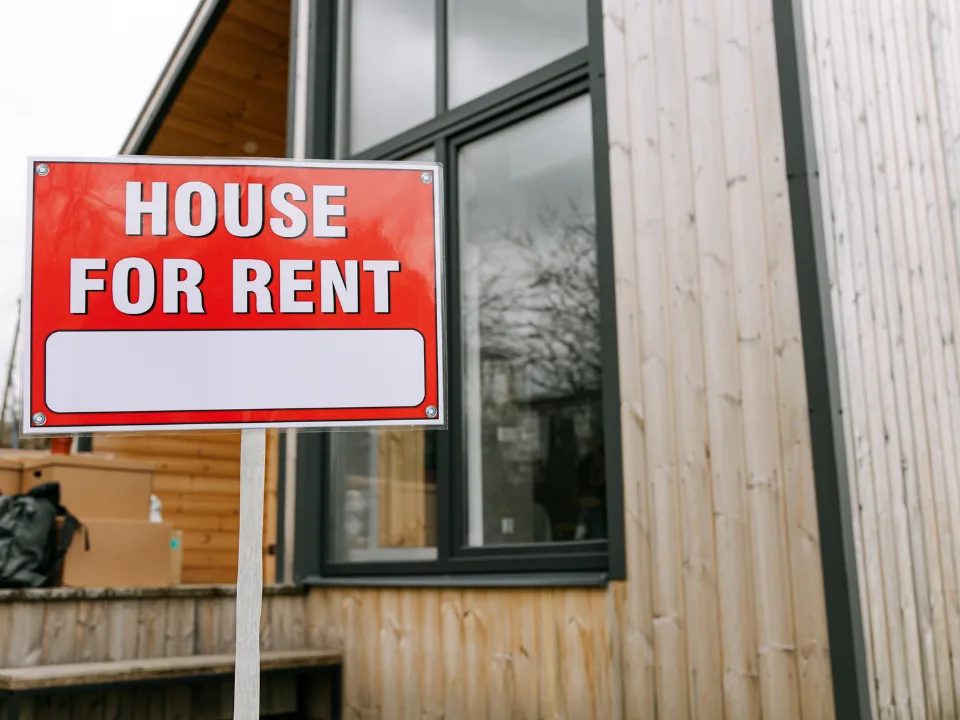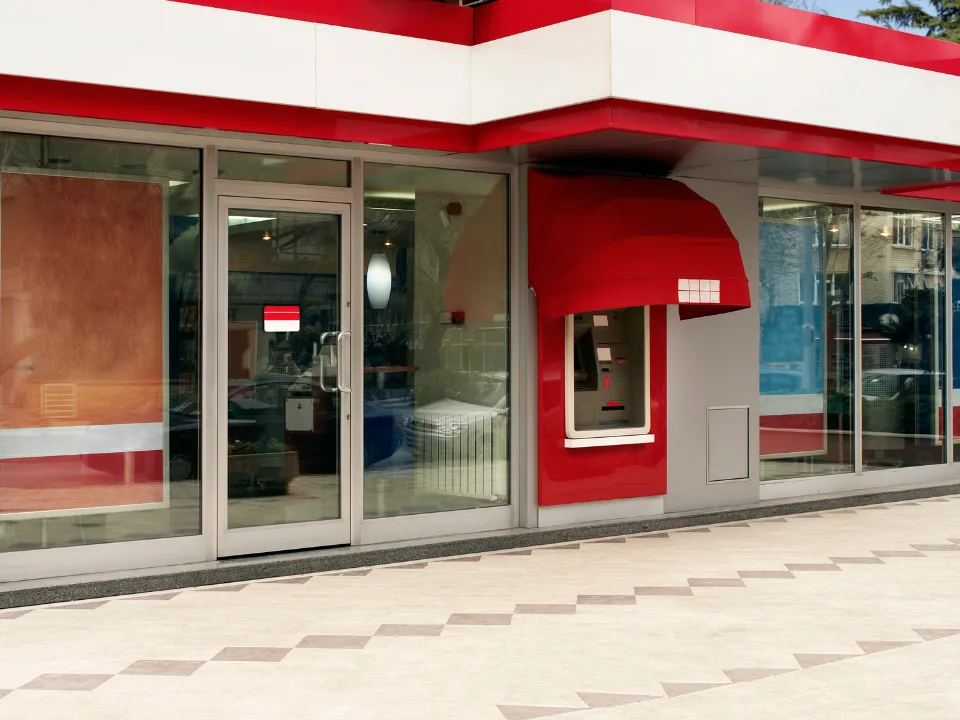The Financial System Strained by $270B in CRE Loans
Concerns about debt create worries for banks, but not all product types, locations or debt may be in trouble.
Good morning. Rent growth on a YoY basis is reducing to levels seen before the pandemic as there is an unprecedented increase in the housing stock, reminiscent of the 1970s. Meanwhile, commercial real estate poses a challenge for the financial system as around $270B of loans will mature in 2023, with many of them supported by vacant office buildings.
📬 Want to share the CRE Daily? Click here to forward this email.
RENT REVIEW
Rent Growth Down YoY, Now Below Pre-Pandemic Average

Year-over-year rent growth has declined to just 2.6%, the lowest growth rate since April 2021 (the average rent growth rate from 2018–2019 was 2.8%). And there are signs that the decline will continue in the coming months.
Housing stock surge: Vacancies are returning to normal levels as an influx of supply enters the market. At 6.6%, vacancies are up 0.2% from February. At the end of 2022, over 917K apartments were under construction nationwide, which will boost existing U.S. apartment stock by 4.9%. Notably, there haven’t been this many units under construction since the 70s.

Ups and downs: Rents did increase month-over-month in 78 of the 100 largest metros, up from the figure of 62 last month. Midwest cities like Chicago, Indianapolis, and Louisville saw rents grow 6%, while Boston enjoyed the biggest gains at 2.6%. At the same time, 28 cities had negative YoY growth, up from 25 last year.

➥ THE TAKEAWAY
Suspended animation: This month saw an average 0.5% increase in rents, demonstrating a slightly faster rate of growth than seen in February, suggesting rents are on an upward climb. With that in mind, YoY growth fell to 2.6%, below pre-pandemic averages. The strong construction pipeline should keep rent growth down even if demand remains high. In short: prices shouldn’t plunge—but they probably won’t go up much, either.
🌐 Around the Web
📖 Read this article from the WSJ on the struggle between state governments and developers over the e-commerce explosion that left many local residents none too pleased about the rapid development of warehouse spaces in their neighborhoods.
🖥️ Watch this interview with Cedrik Lachance, research director at Green Street, who explains why today’s market doesn’t resemble the Great Recession despite the recent high-profile closures of SVB, Signature Bank, and Credit Suisse.
🎧 Listen to Kevin Fagan, head of CRE Economic Analysis at Moody’s, discuss the Fed’s move to raise rates and what it means for CMBS loans on this episode of Bisnow Reports.
HIGH STRESS
Commercial Real Estate is Banking’s Biggest Anxiety
It’s no secret that the U.S. financial system isn’t at its stablest right now. Now, all eyes are on CRE because of $270B in maturing real estate loans this year, a figure that has banks on high alert.
On the radar: Concern about widespread distress in the CRE sector and its potential to wreak havoc on regional banks has reached the White House. Policymakers in the executive branch, the Treasury Department, and the Fed have convened to discuss the risks posed by the $20T industry on the financial system, and a possible strategy to redress the issue before it gets out of hand.
Office sector in a bind: Approximately 30% or $79.3 billion of the $270 billion in commercial real estate loans maturing this year are secured by office properties, which is the largest amount among all property types. Of particular concern to the Trepp analysts is the current state of the office sector, which has been adversely affected by remote work and the growing popularity of flexible and hybrid work schedules in the contemporary U.S. job market.

Too much space: Cushman & Wakefield predicts that the U.S. office real estate inventory will slightly increase to 5.68 billion square feet by 2030, while the demand for office space by the workforce is expected to be 4.61 billion square feet. This could result in a surplus of 1.1 billion square feet of excess office space, a 55% increase from obsolete office space in Q4 2019.
What else is at risk? Multifamily investors may have maturing debt problems, with the volume of multifamily debt being twice the commercial market and four times the industrial segment. Many bullish investors have used floating-rate debt to purchase properties, leading to increased debt payments. Multifamily owners carrying bridge loans are also likely to face challenges as the volume of debt requiring financing has increased, and refinancing in 2023 will require more equity.
➥ THE TAKEAWAY
Beyond the bridge: Certain loan types, such as bridge loans and Commercial Mortgage-Backed Securities, may be more vulnerable to debt maturity challenges than others. However, not all CMBS loans may be problematic, as 10-year CMBS loans issued in 2013 have been safely refinanced with low-cost, fixed-rate debt.
📰 Daily Picks
-
The chosen three: Chicago officials have chosen three projects (equivalent to 1K apartments) to inaugurate the effort to revive the LaSalle Street district via subsidies for office conversions.
-
Loans to market: According to sources, the FDIC intends to hire Newmark to market approximately $60 billion worth of loans held by the defunct Signature Bank.
-
REIT redemptions: In February, fundraising for non-traded REITs dropped to $489M, while reported monthly redemptions surpassed $1.7B, equivalent to 351% of the fundraising.
-
Protect the wealthy: Credit Suisse, the bankrupt Swiss bank acquired by UBS Group, has been accused by whistleblowers of facilitating the evasion of US taxes by affluent Americans for several years.
-
Apartment construction: The National Multifamily Housing Council’s survey reveals that while expenses and delays remain a concern, the market outlook for apartments is becoming more favorable.
-
Encouraging development: San Francisco has introduced legislation to facilitate the conversion of underused office space into housing, providing flexibility to development in areas zoned as C-2 community business and C-3 downtown commercial.
-
Throwing in the towel: The embattled Chetrit Organization has given up on 850 Third Avenue, transferring ownership to HPS Investment Partners in a deal valued at $266M.
-
FL lives local: The Florida state legislature passed the Live Local Act, an affordable housing bill containing $711M to fund development programs and incentives for development while banning rent controls.
-
Losing luster: As other banks failed, First Republic (FRC) saw its stock crumble, causing its wealthiest customers and biggest proponents to reassess whether they should stay with the bank. Big lenders deposited $30B with FRC, buying them time.
-
Plan B: NY Governor Hochul’s plan to fund the renovation of Penn Station has failed. Now a subsidiary of ASTM Group has proposed a new project: a rectangular glass station around Madison Square Garden.
-
From auto to office: Miami auto dealer Ali Ahmed has purchased the Biscayne Centre in North Miami for $39M. The property’s seller purchased the building in 2012 for just $793K.
💼 Talent Collective
In partnership with Bullpen
This week Bullpen is bringing some interesting new contract positions, including a full-time PropTech role that could be a great fit for someone looking to move from the technical to the operations side.
-
Associate, Land Development
💰 Hourly (Remote) ❗️ SFH and multifamily in Michigan
-
Underwriter, Commercial Lending
💰 Hourly (Remote) ❗️ Underwriting and financial analysis of mixed-use and other property types
-
Investment Operations, PropTech Firm
💰 Full-time (Remote) ❗️ Need expertise in C#, .NET, and SQL plus an interest in PropTech/investment operations
Looking to hire? Connect with Bullpen
📈 Chart of the Day
What did you think of today’s newsletter? |



















